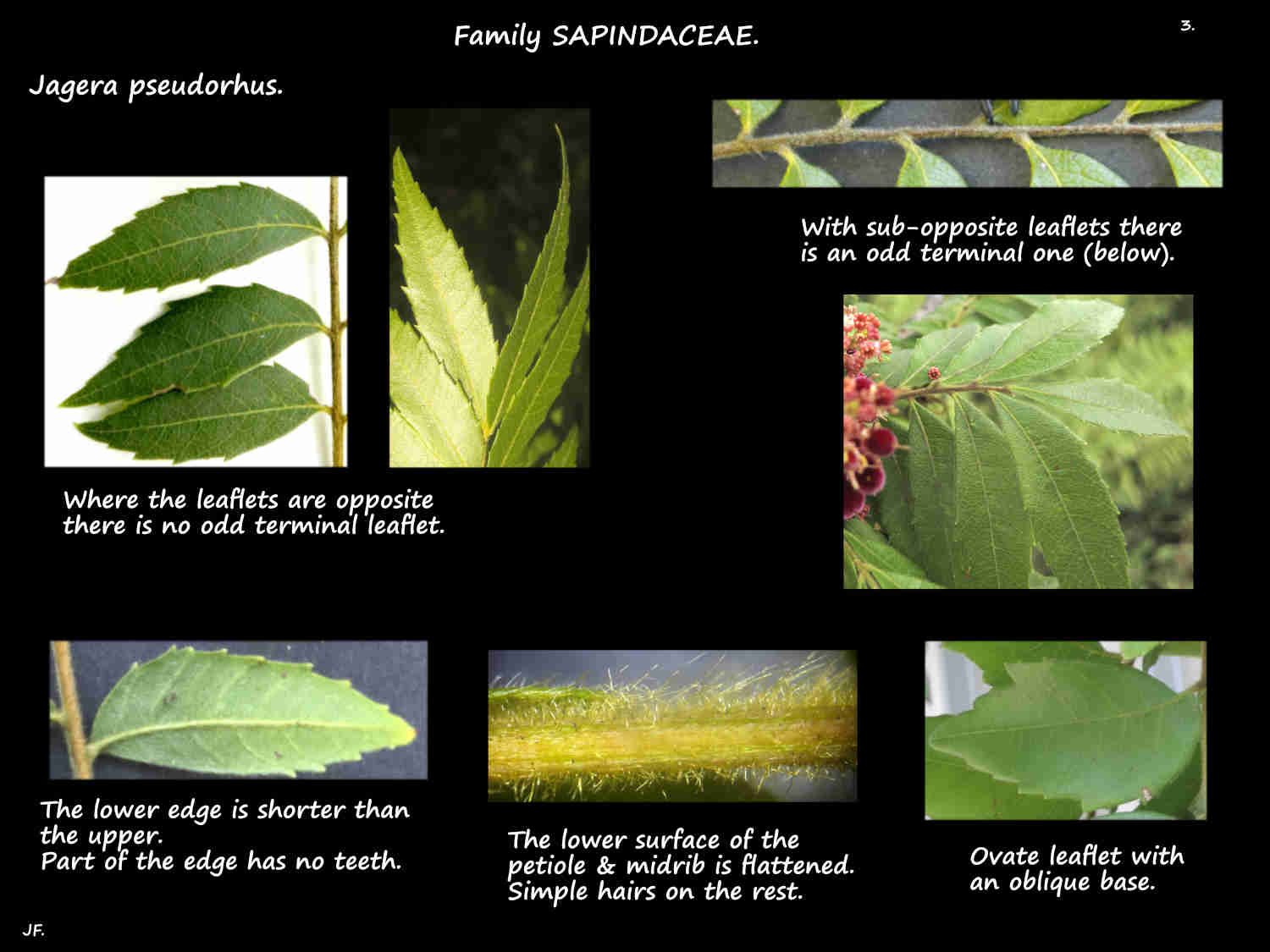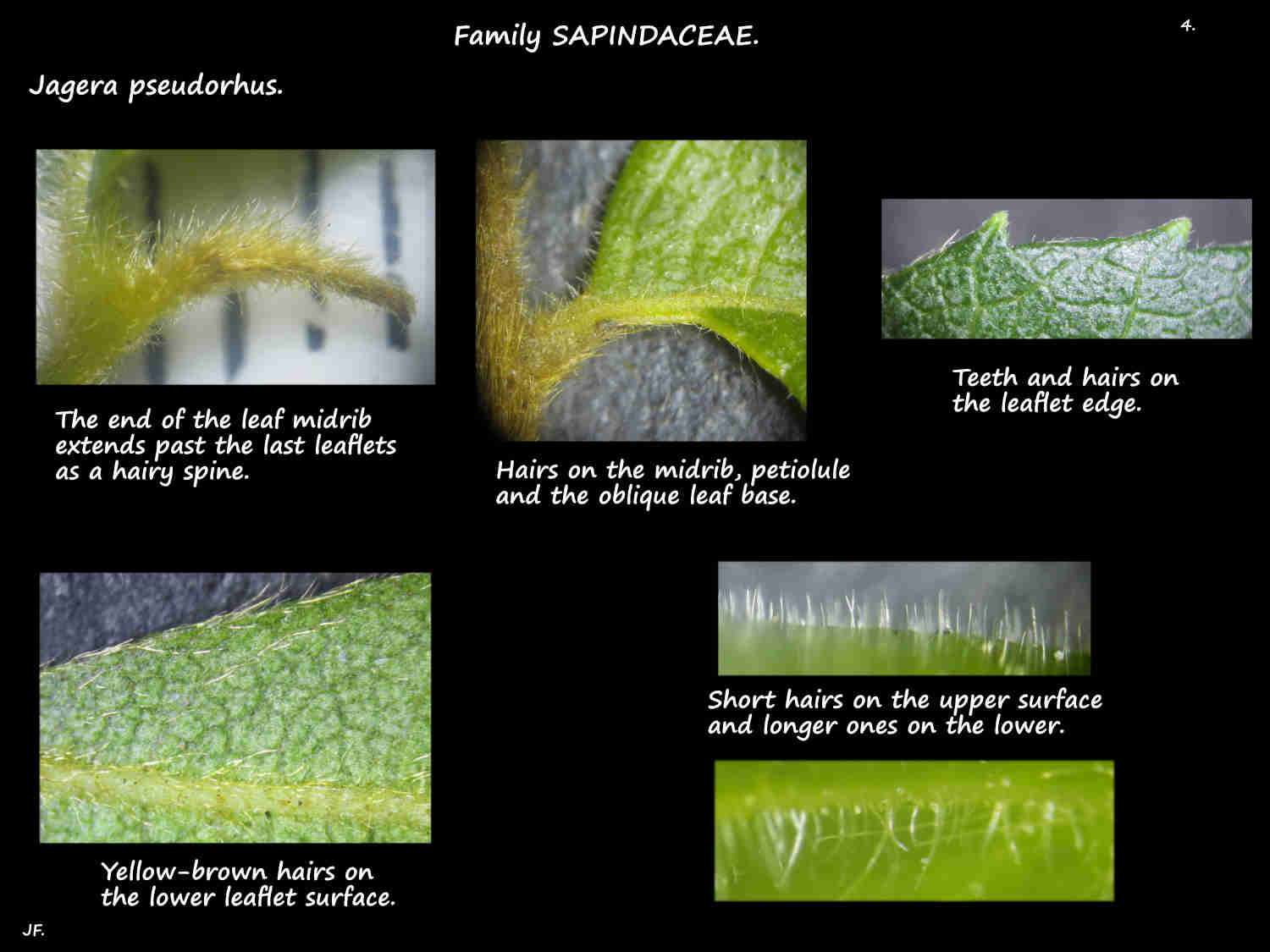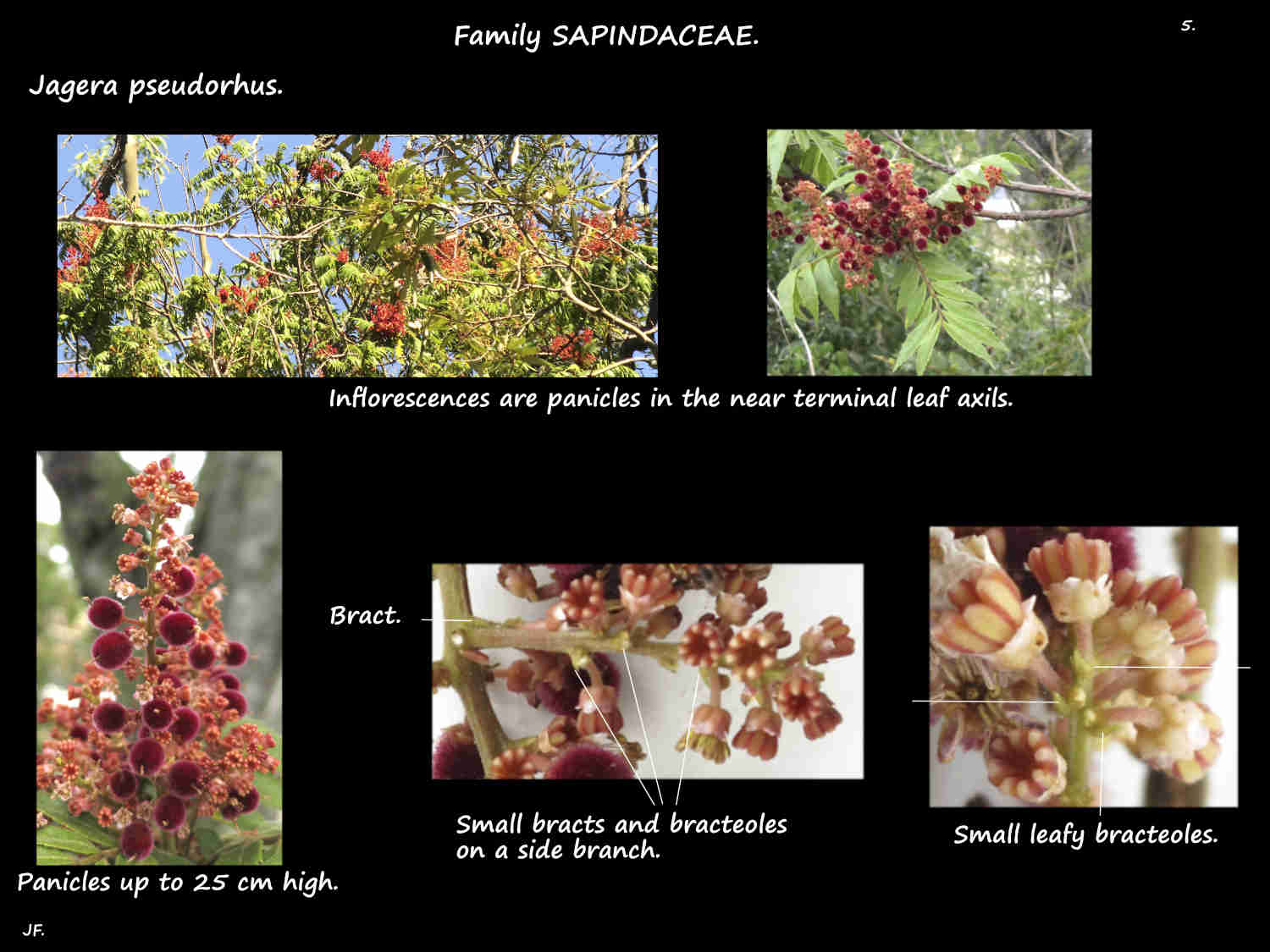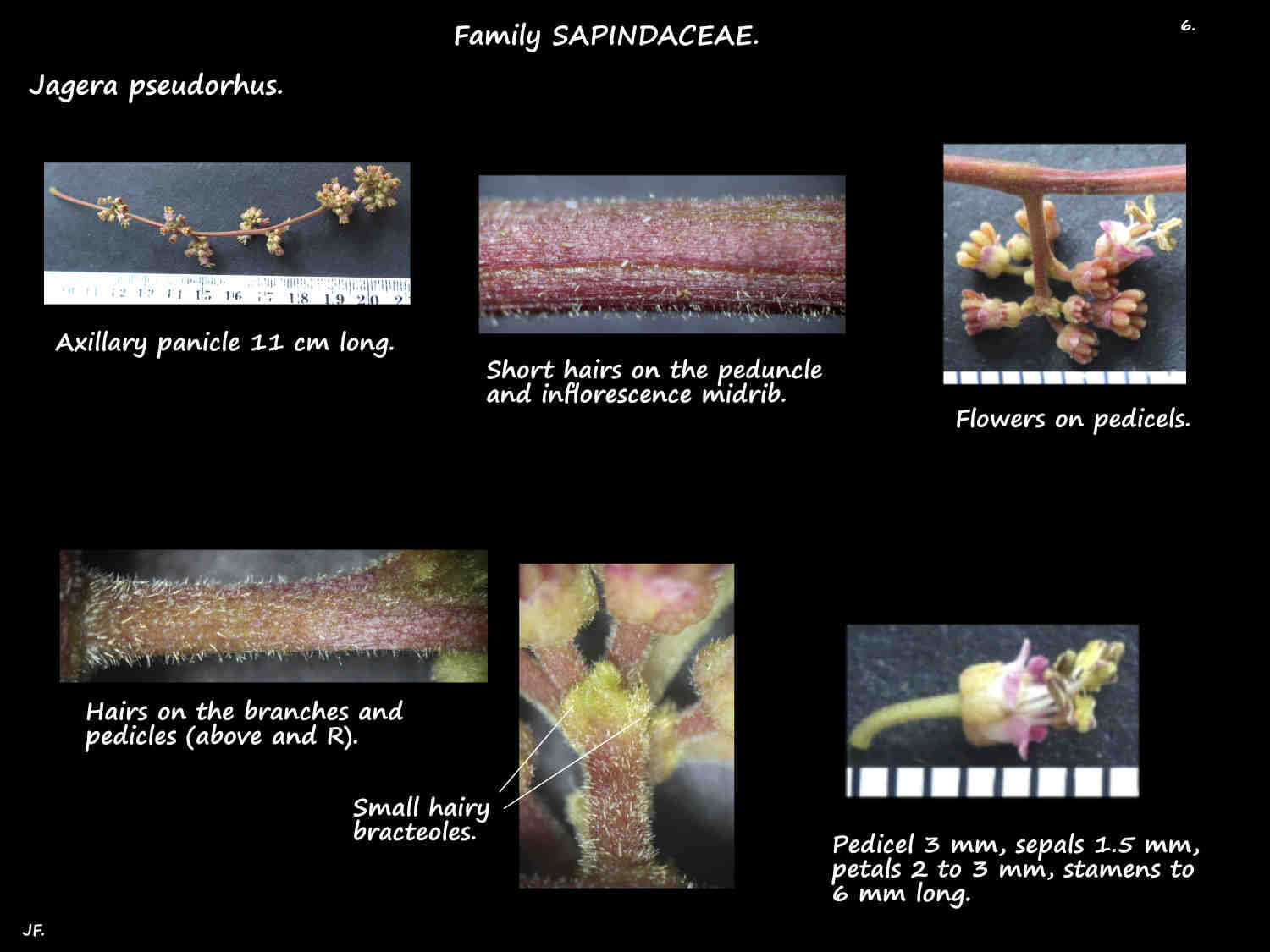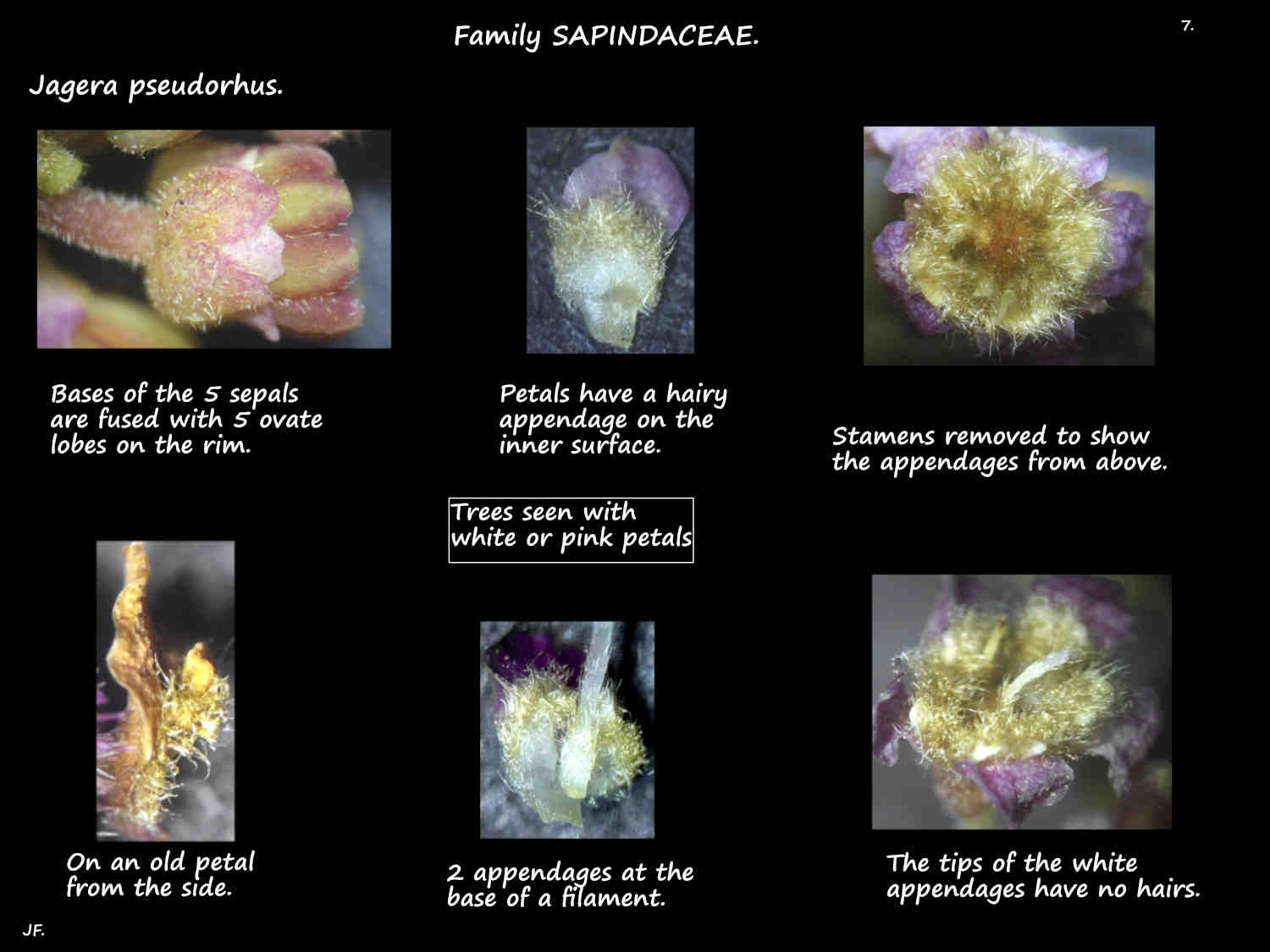Jagera pseudorhus.
Cupania pseudorhus (pronounced pseuDORus) is a synonym of Jagera pseudorhus.
The Foam Bark or Fern Tree is found in N.E. Australia and New Guinea.
It seems to be the only one sold in Queensland and by very few nurseries.
In Brisbane they are seen as small trees 5 to 15 m high but they can grow to 30 m.
The trunk, with grey bark can be up to 50 cm across.
There may be raised, horizontal leaf scars and small vertical ridges.
Older trees may have a deeply grooved base and a rounded crown.
There are usually dense, rust-coloured hairs on young shoots, stems, leaves and inflorescence stalks.
The leaf size and the presence and amount of hair is very variable.
The alternately arranged leaves are up to 18 or 20 cm long.
The lower surface of the petiole and leaf midrib are flattened.
Leaves are pinnate with 4 to 13 pairs of oppositely arranged leaflets.
(Sometimes the leaflets are sub-opposite with an odd terminal one.)
The leaf midrib extends past the last leaflets as a short hairy spine.
Leaflets are from 1.5 to 11 cm long by 2 or 3 cm wide and on petiolules up to 3 mm long.
The blades are elliptic, oblanceolate or sickle-shaped with a pointed tip.
The sides are of unequal length, the midrib is not central and the base is oblique.
All or part of the edge may be entire (smooth) but there are usually forward-pointing saw-like teeth
(serrate or serrulate when the teeth are very small).
Rust-coloured hairs are dense on the lower surface and variable on the upper.
The much-branched inflorescences are in the near terminal axils.
They are up to 25 cm long and almost the same width at the base.
Flowers are mainly unisexual with both types on the same tree.
The smooth or hairy calyx has 5 lobes.
The 2 to 3 mm long petals are described as cream to white sometimes with a red tinge or yellowish-brown.
They have a small claw base and a hairy club-shaped appendage at the base of the inner surface.
The 8 (7 to 9) stamens have filaments up to 6 mm long with hairs on them.
The anthers open via longitudinal slits.
There is a continuous nectiferous disc around the base of the stamens.
The hairy superior ovary has 3 or 4 locules with 1 ovule in each.
The fruit, up to 2 cm long are roughly ovoid or obovoid loculicidal capsules with 3 (4) chambers.
Young ones are maroon but they mature to a yellow-brown or brown.
There are irritant hairs on both surfaces.
The black or dark brown seeds, up to 8 mm long have a small aril (fleshy appendage).
Varieties.
There are 2 varieties and a number of forms are described.
Distinguishing features include the number of leaflets, the presence or absence of hairs on various parts,
the ends of the veins on the upper leaflet surface being sunken or not, the size of the
inflorescence and its width compared to the height.
J. pseudorhus differs from J. javanica in its smaller and fewer leaflets and the smaller, less branched inflorescences.
Jagera madida.
This was previously known as Jagera javanica subsp. australiana but its name was changed to Jagera
madida in 2006 in Australia.
Some sources recognise this change (Encyclopedia of Life, Global Biodiversity Information Facility ID (GBIF) while others do not (Kew).
Jagera javanica subsp. australiana is listed in a few places as an ambiguous or unresolved name.
Jagera madida, known as the Daintree Foambark is native to Queensland.
J.F.



